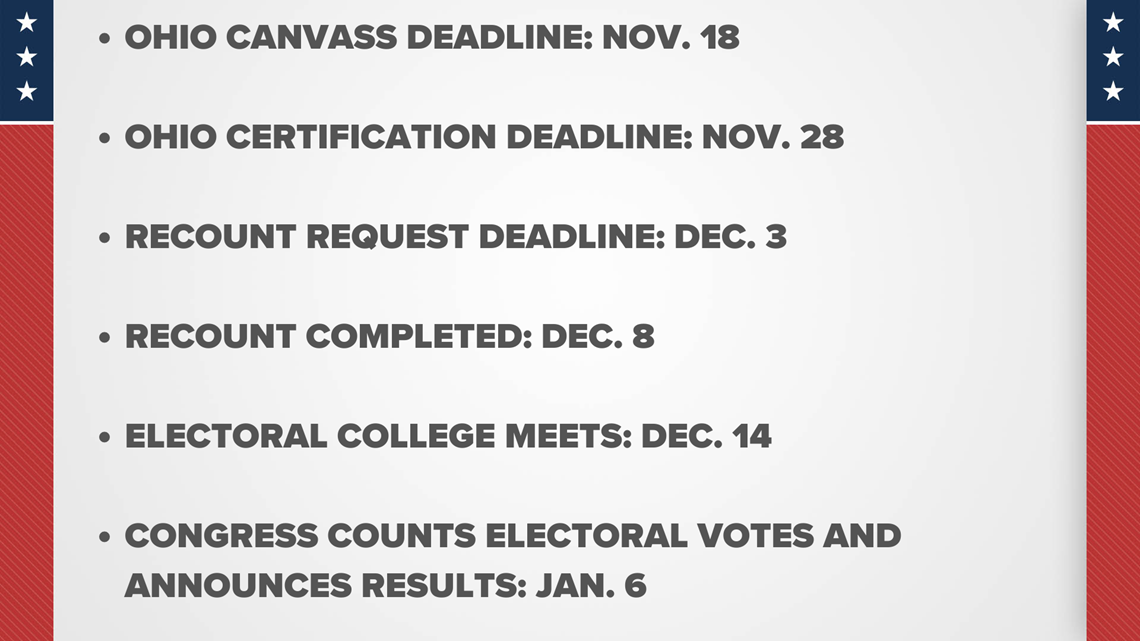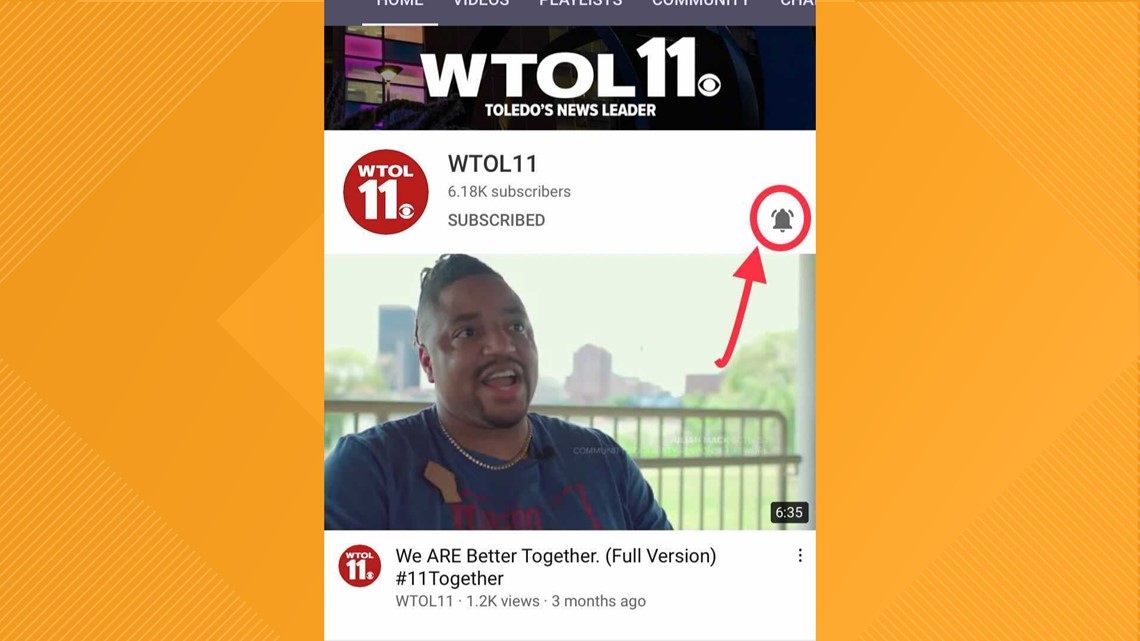TOLEDO, Ohio — Election Day is upon us so what happens next? Once the polls are closed, what happens behind the scenes? Here is a look at what happens with your vote after Nov. 3.
Just because votes are in, it doesn’t mean the election is over. Election officials still have to complete their postelection duties and the results have to be certified.
The process of canvassing results are the states' responsibilities, so there are 51 models out there, including Washington D.C. However, there is a general order of events.
First, local election officials have to count the ballots, and this can happen at a polling place or a central location. Just keep in mind, election night results are not official and have never been.
We get preliminary, unofficial results as they become available but nothing is locked in until much later.
Once regular ballots are counted, provisional ballots are processed.
A provisional ballot is cast in-person when there is doubt about the voter’s identity or their eligibility to vote and is only counted once that information is later verified.
According to Ohio Secretary of State Frank LaRose's website, any of the following scenarios would require you to cast a provisional ballot on Election Day:
- Your name does not appear on the official poll list for that precinct, or an election official asserts that you are not eligible to vote or is unable to determine your eligibility;
- You are unable to provide or do not have the required proof of identity, which includes an Ohio driver’s license or state identification card, military identification, other current and valid photo identification, or a current (within the last 12 months) utility bill, bank statement, government check, paycheck or other government documents (other than a notice of voter registration mailed by a board of elections) that shows the voter’s name and current address;
- Your name appears on the official poll list for that precinct as having already requested an absentee ballot;
- Your name is marked on the poll list or signature book with a notation that certain registration mailings have been returned as undeliverable;
- Your voter registration has been challenged and/or a hearing on a challenge to your eligibility as an elector has been postponed until after Election Day; or
- Your signature, in the opinion of the precinct officers, does not match the signature on your registration form.
Then, after all the ballots - including provisional ones - are counted and processed, the election is canvassed. This means results are prepared and reported by local officials for the state and then the state does its own canvass.
For the 2020 election, Ohio election officials have until Nov. 18 to finish canvassing. Once that is complete, a separate statewide entity certifies those results. That certification is what gives the authority for a newly elected officeholder to be sworn. In Ohio, this step needs to be done by Nov. 28.
Once the results are certified, if a candidate wants to request a recount they have to do so by Dec. 3. But remember, a recount is automatically triggered if the margin between votes is 0.25% or closer.
The recount would need to be done by Dec. 8, or six days before the electoral college meets, which is set for Dec. 14 this year.
Finally, on Jan. 6, Congress will count the electoral votes and declare the results.
But what if the election is contested? Candidates can contest the results of an election, which means they are challenging it on a legal basis. For this to happen in Ohio, the challenge must be filed within 15 days of the results being officially announced or - in the event of a recount - 10 days after those results are officially announced.
Then, what's the next step? A hearing would have to occur between 15 to 30 days after the petition is filed, with the court adjourning no more than 30 days after that.
Now, that's a lot of dates, so here's a quick recap:


But don't worry because WTOL 11 will keep you updated every step of the way. If you have questions? Text them to us at 419 248-1100. If you would like live election updates, tune in on our YouTube channel throughout the night Nov. 3.
If you subscribe and click on the alert link on our page, you’ll get an alert sent to your phone when we have new updates.


RELATED COVERAGE:

